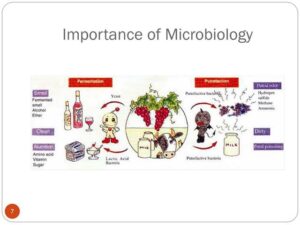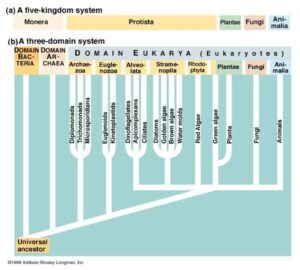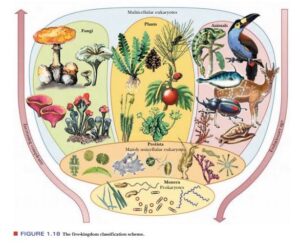Back to: MICROBIOLOGY 100 LEVEL
Welcome to class!
Hello genius! I’m really excited to see you again. You’re doing wonderfully, and each lesson is taking you closer to becoming a microbiology star. Today, we’ll be talking about something you may have wondered before—how do scientists organise the thousands of living things around us? Just like we group our clothes into shirts, trousers, and wrappers, scientists group living organisms into classification systems so we can understand them better. Let’s look at the two main systems used today: the Five Kingdoms and the Three Domains
Systems Of Classification (Five Kingdoms, Three Domains).
The Five Kingdoms
Imagine you walked into a very big compound with all sorts of people—mothers, fathers, children, visitors—and you wanted to organise them. You might group them by age or by role in the home. That’s exactly what scientists do with living things.

The Five Kingdom system, proposed by Robert Whittaker in 1969, groups all life into five large categories:
1. Monera
These are the simplest living things—tiny, single-celled organisms without a proper nucleus. This kingdom includes bacteria, like those found in spoilt food or in the soil after rainfall.
2. Protista
These are also mostly single-celled but have a true nucleus. Examples include amoeba and Plasmodium (the parasite that causes malaria).
3. Fungi
These can be single or multi-celled. They don’t make their own food and absorb nutrients from decaying materials. Think of mushrooms, mould on bread, or the fungi that spoil garri during the rainy season.

4. Plantae
This includes all green plants, from the ugu in your mum’s soup to the big mango tree in your compound. They make their own food through photosynthesis.
5. Animalia
This kingdom includes animals like goats, cats, fish, and humans. They move around and cannot make their own food.
The Three Domains
As science advanced and microscopes became more powerful, scientists discovered that even within the Monera kingdom, there were very different types of organisms. So, a more modern system called the Three Domain system, proposed by Carl Woese in the 1990s, was created.
The Three Domains are:
1. Bacteria – These are the “regular” bacteria we find everywhere—from the air in Abuja to the borehole in Benin.

2. Archaea – These are ancient bacteria that live in extreme environments like hot springs or salty lakes.
3. Eukarya – These include all organisms whose cells have a true nucleus. This domain covers the Protista, Fungi, Plantae, and Animalia kingdoms.
Summary
- Living things can be classified into Five Kingdoms: Monera, Protista, Fungi, Plantae, and Animalia.
- A more modern system uses Three Domains: Bacteria, Archaea, and Eukarya.
- Classification helps scientists understand the relationships and differences between living organisms.
Evaluation
- List the Five Kingdoms of classification.
- What is the difference between Monera and Protista?
- Name the Three Domains and mention one feature of each.
You’ve just tackled one of the foundational topics in biology and microbiology. Keep that brilliant curiosity alive—we at Afrilearn are so proud of you! Let’s keep learning together. See you in the next exciting class!
